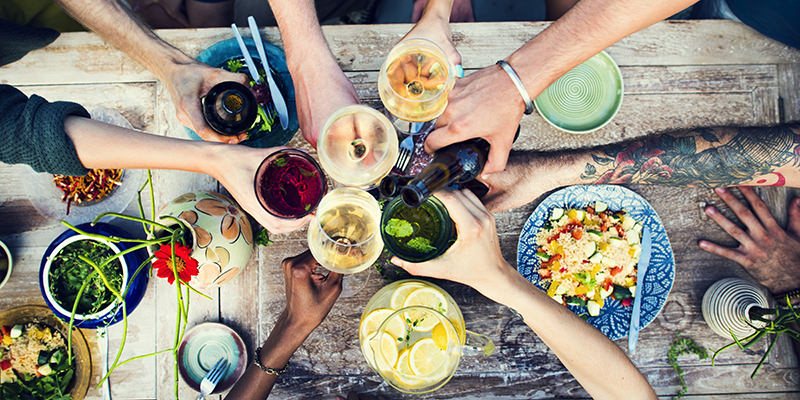In college, my friends and I found every possible opportunity to maximize our drinking. In my house, a thin-walled rowhouse inhabited by eight girls, there were shower beers before pregames and glasses of wine while we got dressed for the party. “Dinner parties” consisted of ten of my friends all ordering Greek food to the same apartment while gulping down glasses of Franzia.
In my post-collegiate years, I find myself less intrigued by the prospect of being wasted for hours on end and more interested in opportunities to actually have conversations and meet new people. That’s why I’ve increasingly been finding excuses to partake in as many dinner parties as possible.
While this very adult-seeming activity can appear daunting, hosting a dinner party is actually rather simple–with the right planning. For beginners, it’s important not to overestimate your capabilities. If you’ve never hosted before, your first-ever dinner party is probably not the best time to singlehandedly attempt to cook a five-course French meal.
The easiest, most foolproof strategy is to throw a potluck dinner, in which every guest is responsible for bringing a dish. Don’t list to the haters who may call you lazy: it is more than acceptable to invite friends to a potluck–someone always makes a killer pasta dish.
If you choose not to go the route of a potluck, you must first select a menu. Make sure that you account for any grave food allergies within your group; nothing spoils a lovely evening quite like anaphylaxis. Whether you are making a Mexican fiesta or an Italian feast or something else entirely, you’ll want to offer options that each of your guests–vegan, vegetarian, paleo, and whatever else–are able to eat. Maybe don’t invite the juice cleansers though.
Once you’ve decided on a food selection, you have to strategize cook times. There’s a reason my mom puts the turkey in the oven at 9:00 a.m on Thanksgiving: some foods take way longer to cook than others. If you plan this out beforehand, you avoid serving your guests undercooked meat or side dishes that have long gone cold.
But remember: no Fireball shots until after dessert. I think Eleanor Roosevelt said that.
Of course, the most important component of any social event is the booze. The standard calculation is that guests will, on average, consume two drinks during the first hour of the event and then one drink per hour after that. You want your guests to be able to unwind and enjoy their evening; make sure you have plenty to drink at your place so that no one will have any alcohol anxiety. (Or, for that matter, social anxiety: as host, keep in mind that everyone might not know each other, and you should do your best to make sure your guests feel comfortable. Booze usually helps.) You should also ensure that you have wine on hand that pairs well with the dishes you’re serving as well as a beer option and perhaps a themed specialty cocktail.
Your guests may also bring beverages. If they do, invite them back. You can tell your guests what kind of wine or booze you’re planning to serve when you invite them, and that will help give them a sense of what they can contribute. When it comes to booze at a dinner party, the more the merrier.
But remember: no Fireball shots until after dessert. I think Eleanor Roosevelt said that.
As an added bonus, if you have the luxury of enough square footage for a real dining room table (my guests sit on the floor around my coffee table), you can even assign seats. This way, you can give guests with similar interests a chance to get to know each other better. If they exchange numbers at the end of the evening, they’ll have you to thank.
No matter how you decide to do it, having people over for dinner is a great way to spend quality time with friends. And if you’re less kitchen savvy, you can always do what I do and convince one of your foodie friends to host at her spacious pad. Either way, put on some ambient music, uncork a bottle of Merlot, and get cooking.

